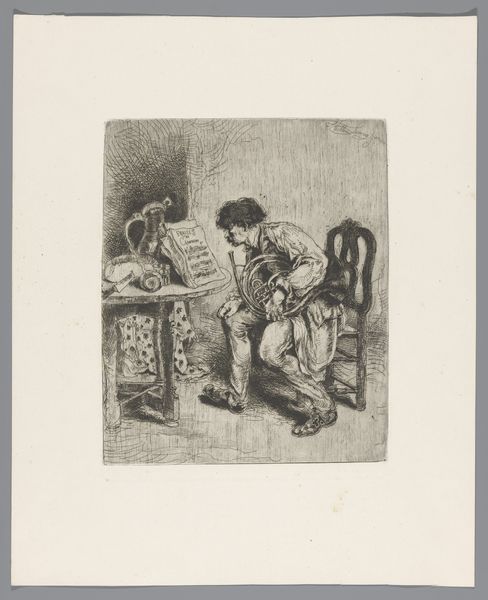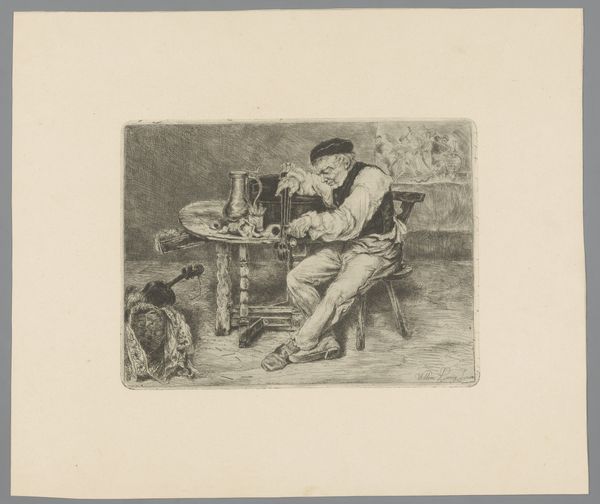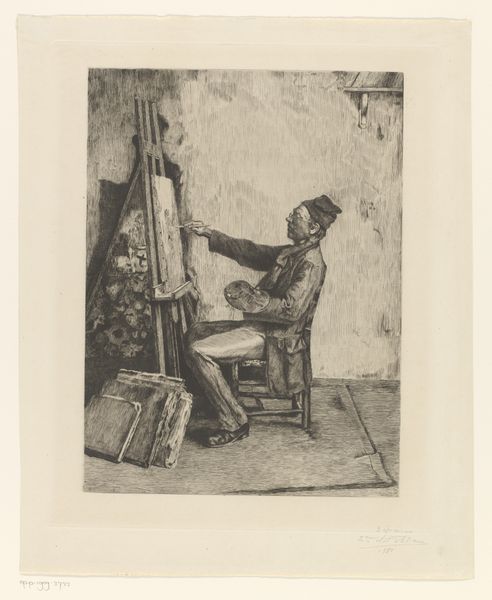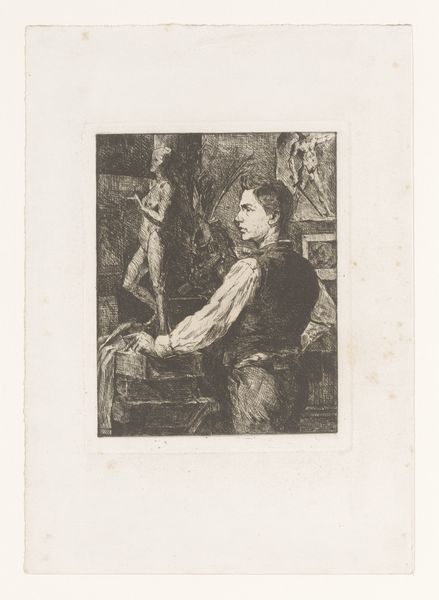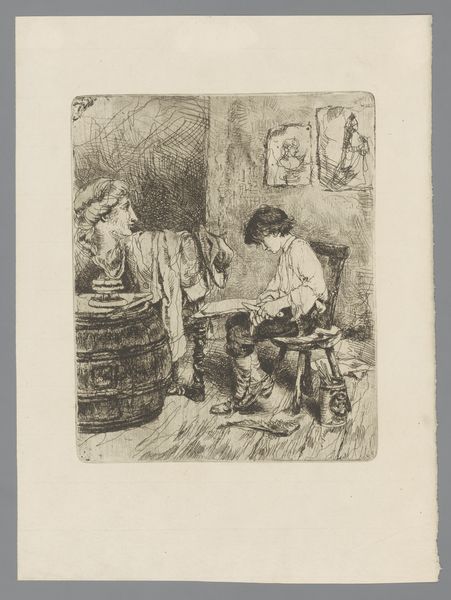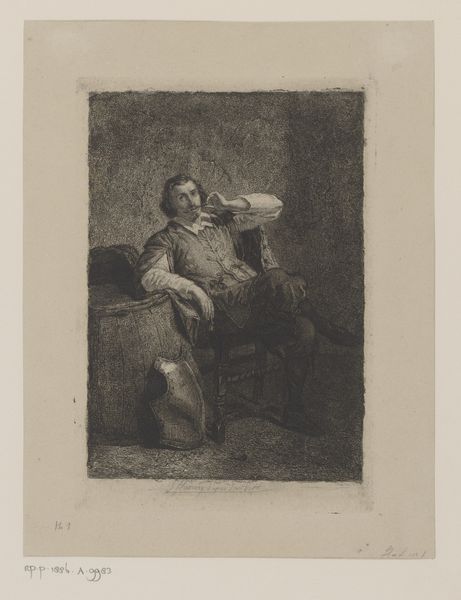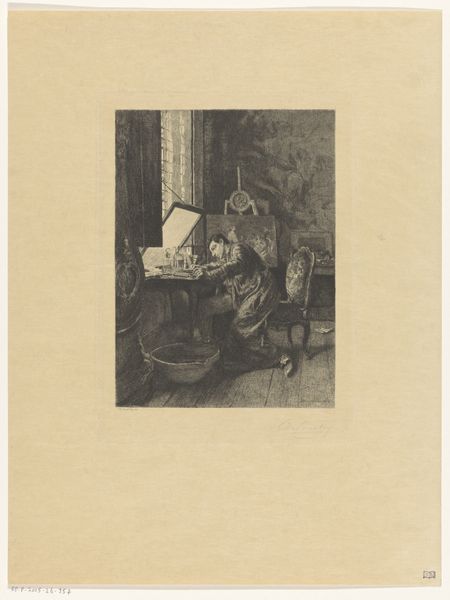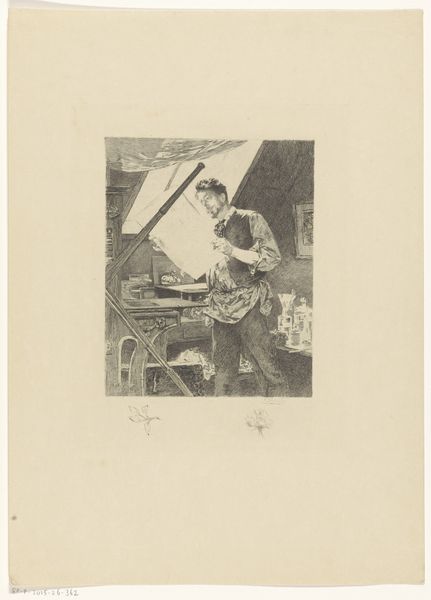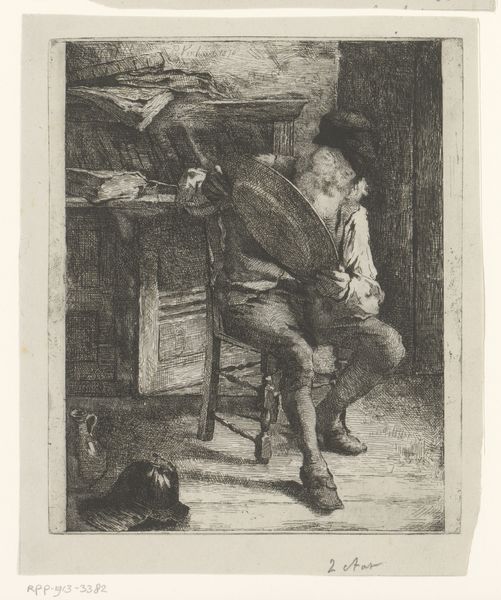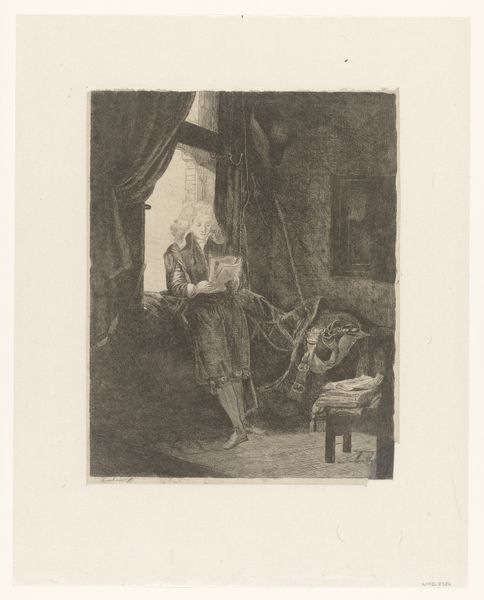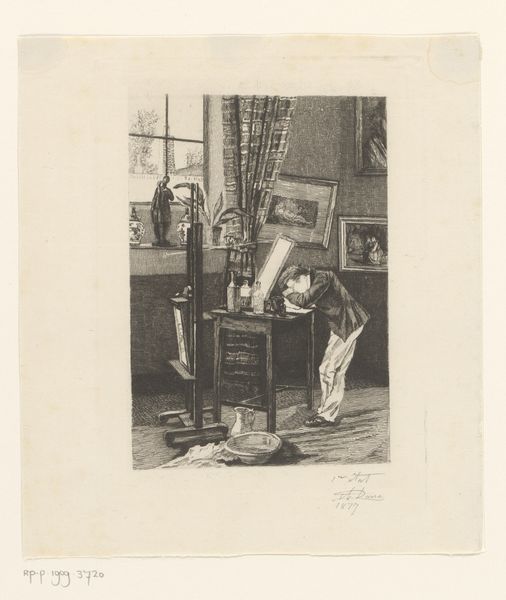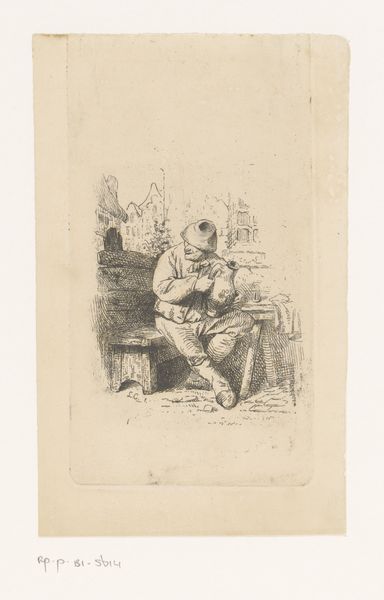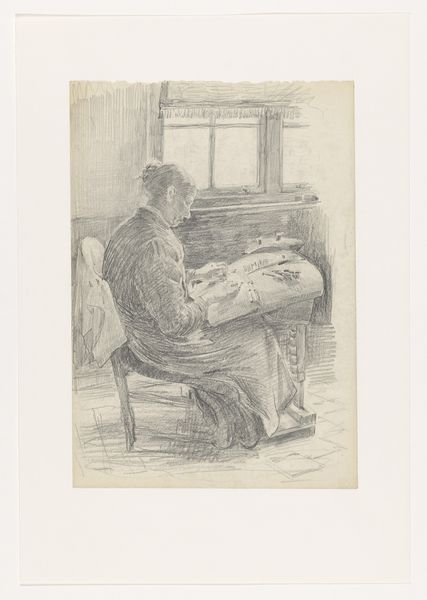
print, etching
#
portrait
# print
#
etching
#
genre-painting
#
realism
Dimensions: height 272 mm, width 220 mm
Copyright: Rijks Museum: Open Domain
Curator: This etching by Willem Linnig the Younger, likely created sometime between 1852 and 1890, is intriguingly titled "Hoornist bestudeert de bladmuziek Fraises au Champagne" which translates to "Horn Player Studying the Sheet Music Strawberries with Champagne." It's currently held at the Rijksmuseum. Editor: The print has an incredibly intimate feel; it's muted, the man focused and a bit scruffy. You can almost feel the struggle with the instrument or perhaps even the music itself. It looks rather humble. Curator: Indeed. And placing this work within the context of 19th-century art institutions and societal expectations helps illuminate it. It falls neatly into the genre painting tradition while incorporating realist principles, documenting ordinary life outside academic themes. The subject isn't some idealized hero or historical figure but simply a musician practicing. How might this imagery play into the development of a bourgeoisie-defined public role of art? Editor: That is an interesting connection. I find it also noteworthy that Linnig includes what appears to be “Fraises au Champagne,” implying a complex relationship between artistic practice, economic precarity and access to luxuries represented through the music score. One could imagine how concepts such as leisure, class identity and male artistic roles are being negotiated through imagery in the print itself. It opens the question of access and labor when we talk about cultural consumption in the 19th century. Curator: And consider that music at that time was inextricably linked with social mobility and status. Perhaps Linnig critiques through such seemingly innocent rendering. This tension between realism and aspirational subject matter deserves some focus given the piece’s original exhibition space and socio-political landscape. Was it trying to be rebellious, satirical, or simply observe everyday life? Editor: The printmaking method adds another layer. This artwork’s wider distribution challenges artistic exclusivity as audiences grew and print reproduction methods facilitated art accessibility beyond private wealthy collectors. Its location today in the Rijksmuseum ensures continual dialogues about its narrative continue among a much wider range of museum attendees today. Curator: It also lets us engage with Linnig’s aesthetic preferences and intentions anew. Its subdued tones, subject focus, combined with music associations spark reflection on status, aspiration, access and art’s purpose. Editor: The socio-economic analysis combined with this visual reading allows us richer contemplation of the historical context, indeed!
Comments
No comments
Be the first to comment and join the conversation on the ultimate creative platform.
